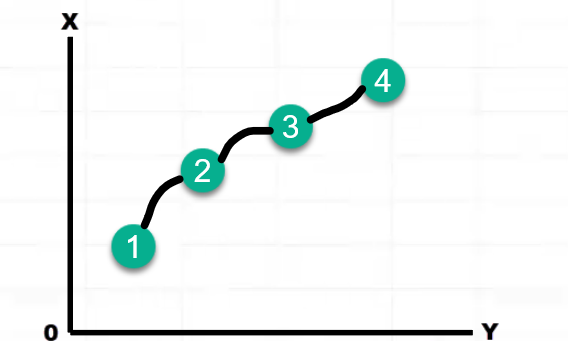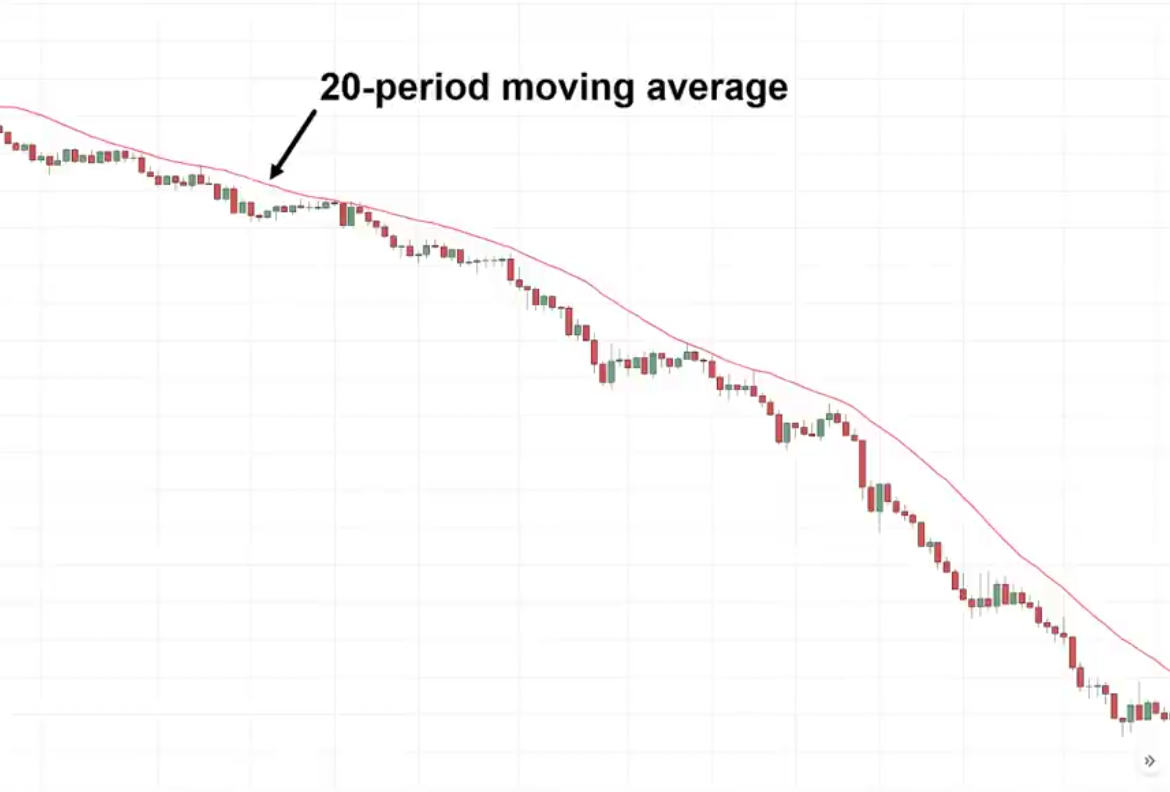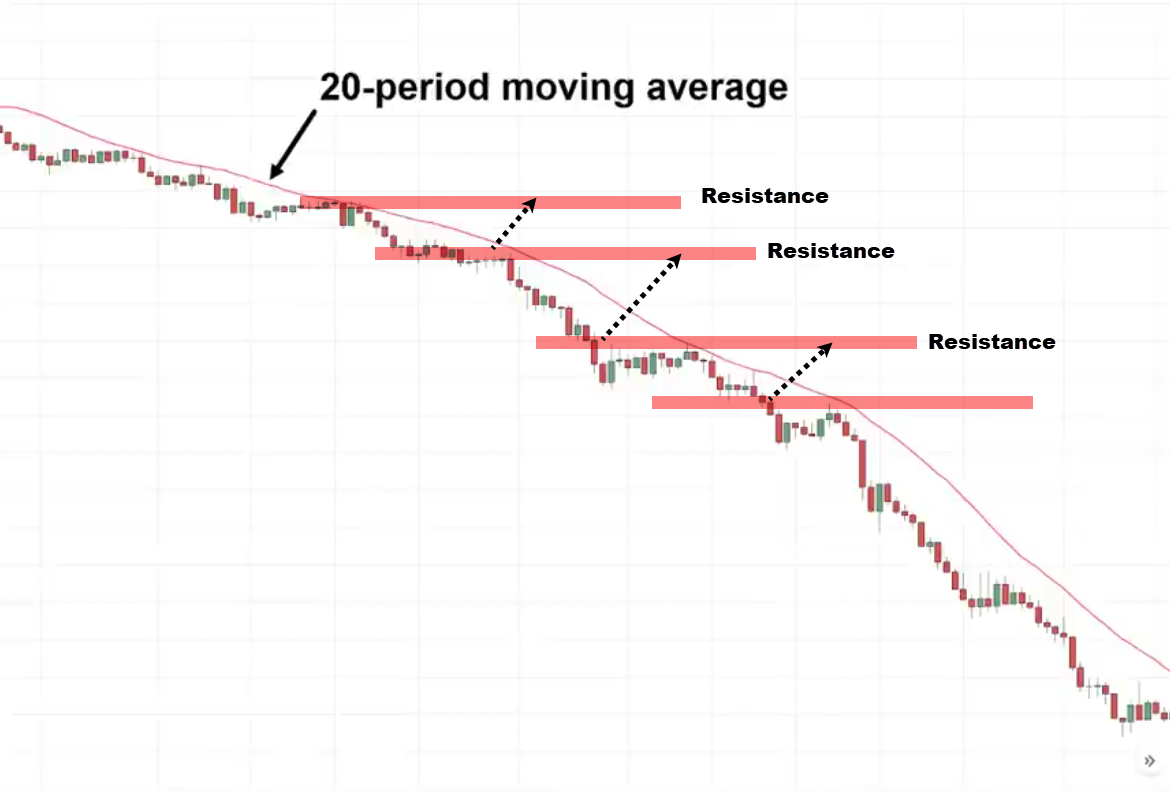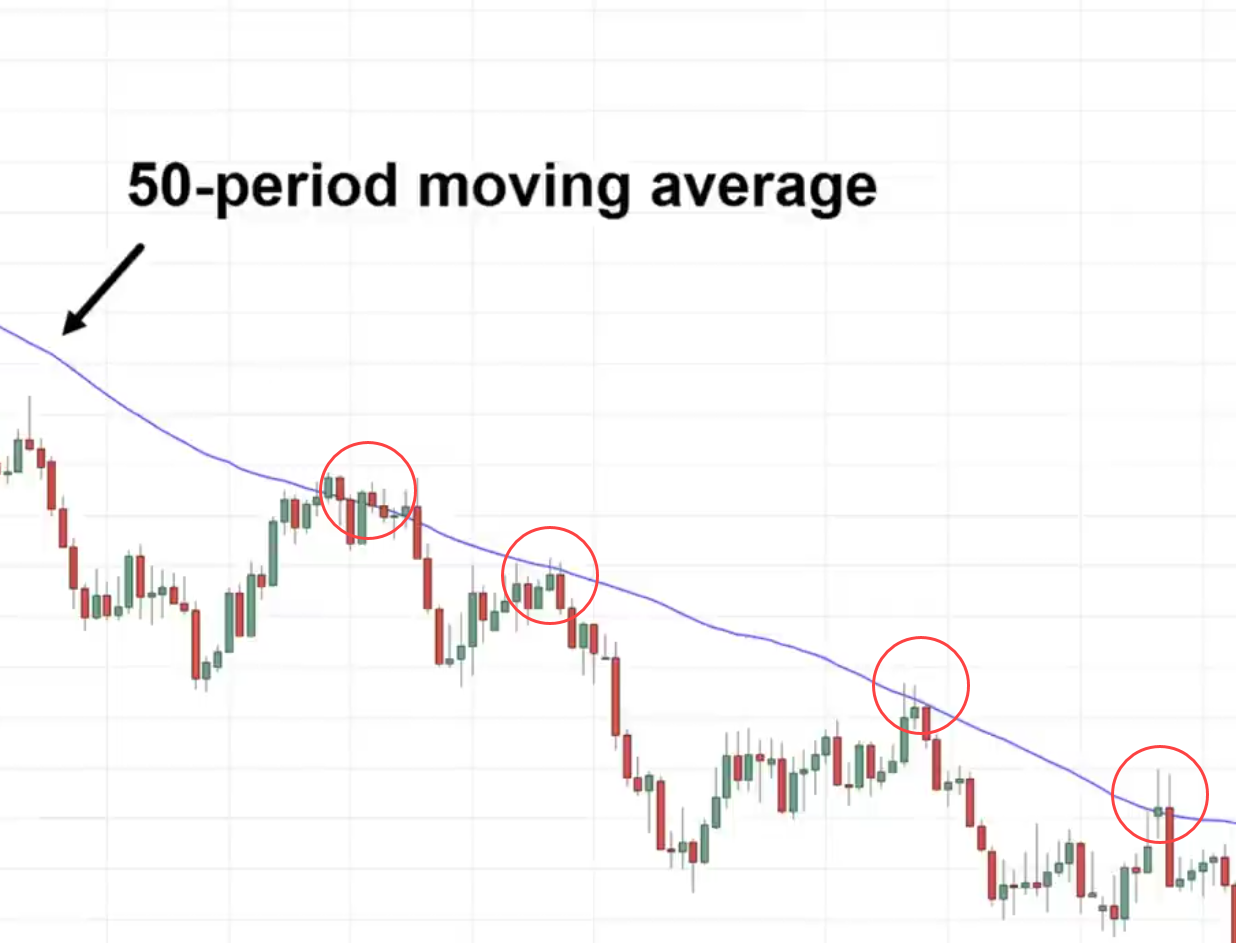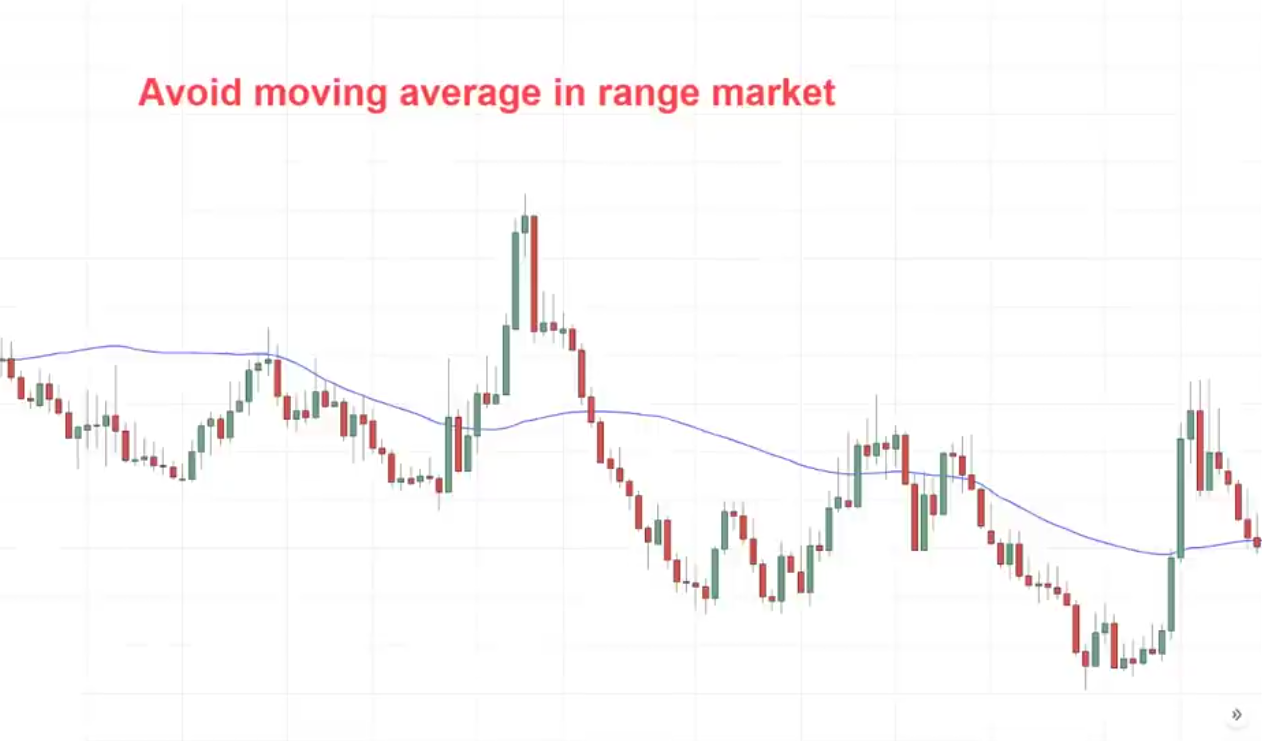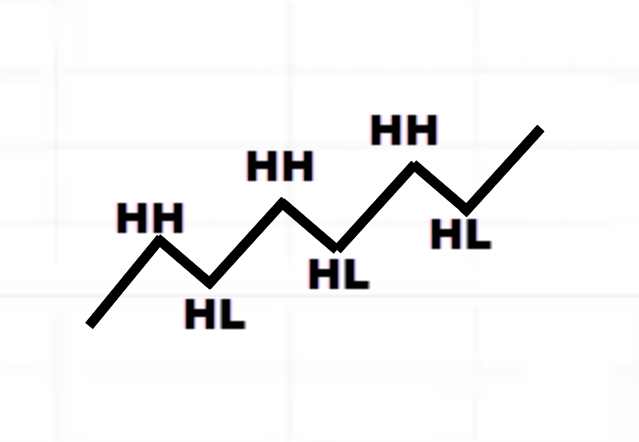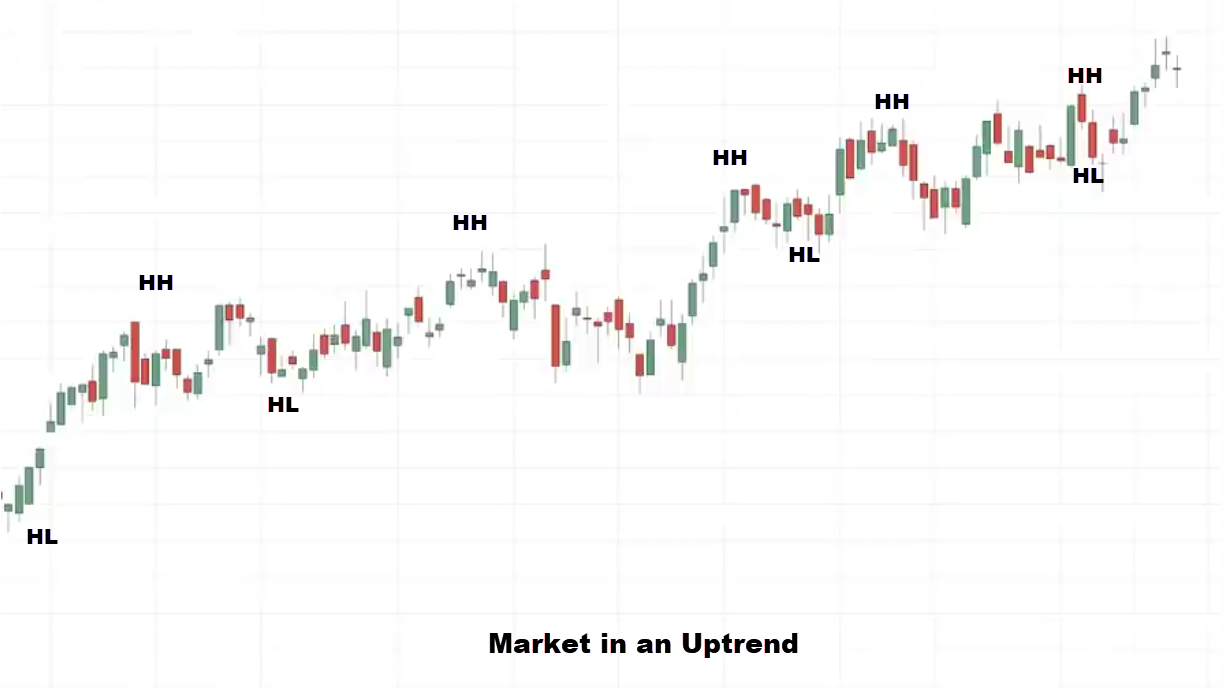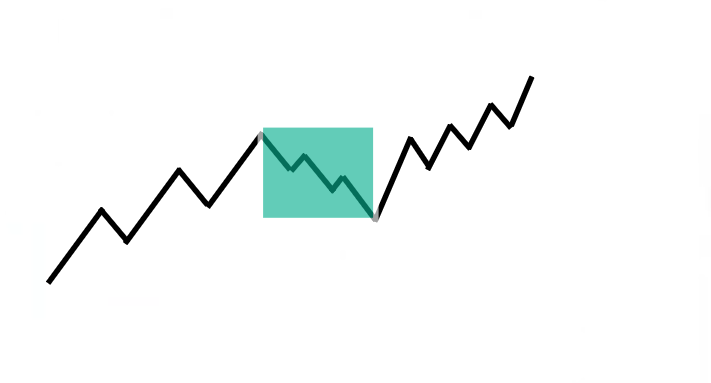What Is a Moving Average and How Does it Work?
The moving average is an indicator that calculates the typical price over a hard and fast period.
If you may have a 10-period moving average, in your chart, it simply calculates the typical price over the past 10 candles.
If you happen to’re on a day by day timeframe, it calculates the typical price over the past 10 days.
If you happen to are using a 50-day moving average, it calculates the typical price over the past 50 days.
Example:
The red line is the moving average.
On this case, it’s a 20-period moving average.
One thing in regards to the moving average is that you just’ll notice it tends to follow the worth.
You’ll be able to see the worth has declined lower and your moving average is heading down as well.
You may be wondering…
Why does it occur?
How The Moving Average Works
Let me explain.
The rationale is that it calculates the typical price over a given period.
Example:
You’ve gotten a 5-period moving average, for an Apple stock. The stock price for the 5 days are as follows:
On the primary day, the stock closed at $1
On the second day, the stock closed at $2
On the third day, the stock closed at $3
On the fourth day, the stock closed at $4
On the fifth day, the stock closed at $5
How do you calculate this 5-period moving average using the information that you may have?
You simply simply take the values from the primary day to the fifth day and divide them by 5.
In essence, on this case, it’s a straightforward moving average we’re calculating.
(1+2+3+4+5)/5 =$3
The 5-day moving average on this case is $3.
Just remember this number moving forward.
On the sixth day, the stock closed at $6
$(1,2,3,4,5,6)
How do you calculate the 5-day moving average on the sixth day?
Now now we have six values on the chart.
If you happen to are coping with moving average you may have to think about the recent 5 days so on this case probably the most recent closing price over the past 5 days is:
$(1, {2,3,4,5,6})
You’ll ignore the primary day, as you will not be coping with a 6-day moving average.
{2+3+4+5+6}/5 = $4
And so forth…
What happens is that in your chart,
Imagine this can be a chart:
What happens is that they are going to connect these dots as lines in your chart, and that’s how your moving average is shown by calculating the typical price over the past 5-days.
And in fact, in case your values get smaller in a descending order the moving average would point down as well.
That’s how your moving average works.
When to Use the Moving Average
Moving Average works best during a trending market. Here’s why.
Have a have a look at this chart:
You’ll be able to see that this market is in a downtrend.
The red line is the 20-period moving average. If you happen to use this moving average for this market condition, you’ll be able to see that you’re going to have the opportunity to identify quite a few trading opportunities.
You’ll be able to see how the market bounced off on the moving average a few times.
These are all potential trading opportunities to short this market and ride the move downward.
Example:
If you happen to are a trader who relies on support and resistance, you will likely be upset because the worth never comes back to resistance. It just continued hitting lower.
There can be a whole lot of missed opportunities in the event you don’t have additional techniques in your toolbox to trade the markets.
This can be a powerful arsenal.
Example:
50-Moving Average
You notice how the market respects this particular moving average on this trending market condition.
The value bounces off the moving average nicely.
In a while, I’ll share with you which ones is the best-moving average to make use of.
When To not Use the Moving Average
Ranging Market:
This can be a perfect example:
When it’s a variety market you don’t use the moving average.
Whatever moving average you may have in your chart, the worth will just slice through it like a hot knife through butter.
The value is available in and cuts through the moving average hits lower and goes up.
You’ll be able to see that in a variety market, the moving average isn’t effective and also you only wish to use the moving average when the market is trending.
It’s key to have the opportunity to discover trends.
Discover the Trend
A market is alleged to be in an uptrend when it consists of a series of upper highs and better lows.
Example:
Why is that this called a better low (HL)?
Since the low is higher than the previous low.
Why is that this called a better high (HH)?
Since the high is higher than the previous high.
Does it make sense?
Example:
That is what we call an uptrend.
We now have a series of higher-high and higher-low
You’ll be able to see that when the market is in an uptrend it should consistently form a series of upper highs and better lows.
A few of you may be considering…
“Rayner, no this isn’t as easy because it seems because there are occasions after I see the market is in an uptrend like this then it goes lower and it continues up higher”
Let me ask you, Rayner…
Is that this now in a downtrend because we now have a lower high and a lower low?
That’s a very good query…
In a market structure, in an uptrend, you don’t at all times get a series of upper highs and better lows because there are occasions when the market could make a pullback, and inside the pullback the market gets messy. It forms a lower high and a lower low.
Sometimes the market could go up and chop into a variety then you definately think it’s a reversal and it breaks up higher.
